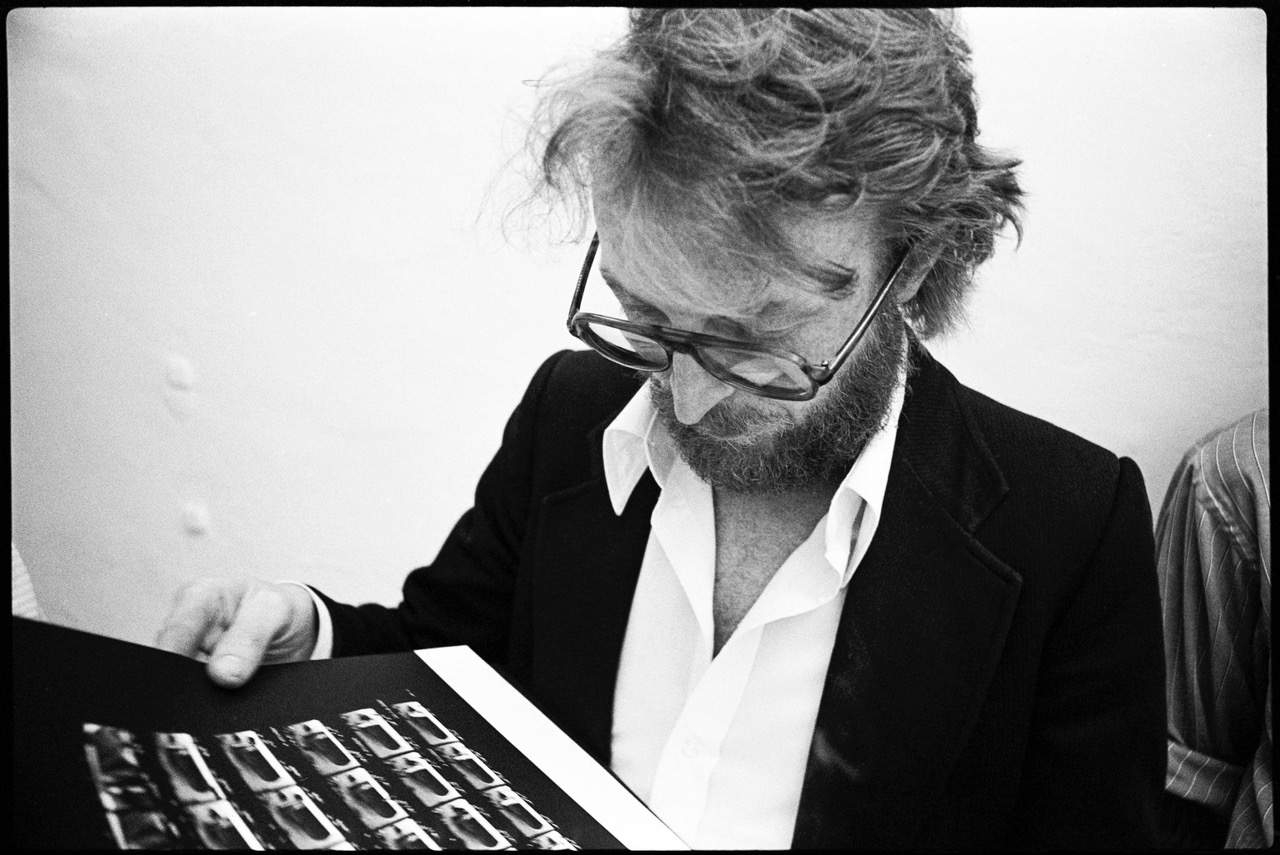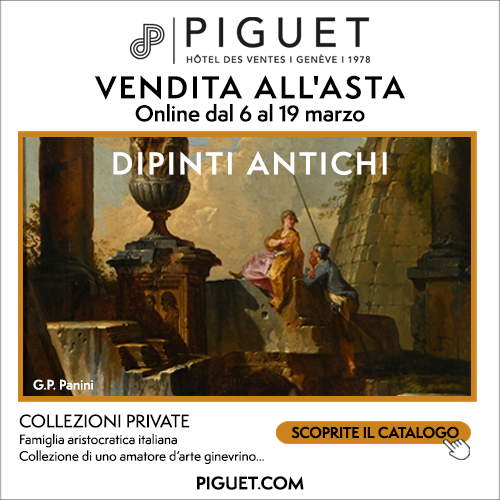Florence hosts the first conference in memory of Pier Luigi Tazzi. What was discussed
A study day dedicated to art critic and curator Pier Luigi Tazzi (Colonnata, 1941 - Montelupo Fiorentino, 2021) was held Saturday, Dec. 17, at the Altana of Palazzo Strozzi in Florence, one year after his death. The conference, promoted by the Region of Tuscany and curated by Lorenzo Bruni, aimed to probe the most significant moments in Tazzi’s career and to address, starting from his research, some issues evoked by the great transformations to which the art world is subjected both at the global level and at the local level linked to the network of Tuscan institutions.
The four panel discussions during the day, which were attended by more than 40 practitioners from the international art system, focused on the theme of the future of the art system, both on how to overcome the current crisis of the curator and on the dialogue between various cultures in the time of globalization in order to rethink, more generally, the meaning of art and interdisciplinarity in the post-internet era. The discussions, statements, and testimonies that emerged addressed the many critical issues that institutions, but also the public, have to deal with these days in a global, post-ideological, and hyper-connected world. The analysis started from the examples that Pier Luigi Tazzi himself has produced in fifty years of activity, which have led him to always work at high levels often outside Italy, but also in specific projects on the Tuscan territory.
Elena Pianea (Tuscany Region) in introducing the conference pointed out, “Today is a very fruitful occasion to create a platform for a meeting between Tuscan institutions and international quality practitioners such as Hans Ulrich Obrist, Mami Kataoka, David Elliott, Ute Meta Bauer, Rirkrit Tiravanija. This study day represents a manifesto of method.” Equally significant was the final comment of Arturo Galansino, director of the Fondazione Palazzo Strozzi: “Today’s day represented a sort of call to arms, a broad reconnaissance of the art system obtained thanks to the many interventions and contributions, which allowed us to reflect on the present value of what Pier Luigi Tazzi pursued in his professional and life path, a research on the concepts of constant transformation, decentralization and interdisciplinarity at the basis of criticism and art of today and tomorrow.” The director of the Pecci Center in Prato, Stefano Collicelli Cagol, emphasized, “I think it is fundamental that the Tuscany Region and all the institutions that are part of the scientific committee of this study day work also in the future to ensure not only the study and research, but also the distribution and dissemination of what has been Pier Luigi Tazzi’s contribution to the cultural debate, the only Italian before Carolyn Christov-Bakargiev, who participated in the establishment of an edition of Documenta.”
From the first panel discussion, moderated by Marco Senaldi, entitled From Criticism 0 to the Future of Criticism, in which personalities such as Elio Grazioli, Federica Boragina, Luca Cerizza, Renato Barilli, Henry Meyric-Hughes, Ilaria Bernardi, Francesco Urbano Ragazzi, Viktor Misiano, Giorgio Verzotti, and Angela Vettese were invited to participate, two main aspects emerged, the first related to the identification of thelegacycriticism of Tazzi, which led Giorgio Verzotti to trace it in his “method-non-method, determined by the passionality that guided him in his choice of artists with whom to work, with deep and long-term loves along with the sharp refusals or polemical spirit that sometimes animated him. A passionality that in him was not dispensation but an instrument of knowledge. This for me is his legacy.” The second, on the other hand, sought to reflect on the future of criticism, believed to be already in crisis in 1978 when Tazzi was organizing the conference in Montecatini Terme entitled Criticism 0, which can be summed up in the words of Viktor Misiano: “Today’s criticism should be ready not so much to criticize art as to criticize itself. It should be a form of knowledge that not only tries to teach something, but is also capable of unlearning. And if it teaches, it teaches precisely to unlearn.”
The second panel, moderated by Fabio Cavallucci, The Transformations of Curatorship (1992-2022), featured interventions by Maurizio Bortolotti, Denys Zacharopoulos, Bart De Baere, Ute Meta Bauer, Chiara Ianeselli, Hedwig Fijen, and Hans Ulrich Obrist. The latter debated how major exhibitions have changed since the 1990s and, in particular, how Documenta, to which Tazzi collaborated as co-curator in the 1992 edition, has changed over the years reaching up to the latest edition in 2022, in which not a list of artists but different communities from various parts of the planet were presented in an attempt to go beyond the traditional exhibition model. Thinking about the recent crisis in the figure of the curator, Obrist pointed out that: “In the twentieth century the focus was entirely on the role of the exhibition, but today, in the post-Covid era and grappling with an ecological crisis, artists are reflecting on sustainable ideas and projects, just as they prefer to work not on the occupation of space but on temporalities to be shared. Artists, instead of creating an exhibition, create gardens and moments to aggregate communities beyond the cultural event itself.” There is, therefore, a move toward "an art that is less ’evenemential,’ but more of longue durée." Ute Meta Bauer, on the other hand, pointed out that: “Ruangrupa with the last edition of Documenta has also tried to explain how we can live together differently, integrating into communities of shared interests,” and Chiara Ianeselli, who worked on Documenta 15, pointed out that “the growth in the number of participants-we came to count over 1630-has been matched by a proportional decrease in ownership and authorship.”
The third panel discussion, moderated by David Elliott, Decentralization, Beyond Globalization with talks by Tommaso Sacchi, Hou Hanru, Mami Kataoka, Emma Ridgway, Franco La Cecla and Rirkrit Tiravanija, brought to attention the many issues related to the dialogue between heterogeneous cultural models, recalling, as anthropologist Franco La Cecla proposed, to rethink the issue of decolonization of museums from perspectives no longer only related to the Western gaze. La Cecla, in fact, recalled that "this approach of an encounter between the world of anthropology and the world of art has a precedent in the 1988 exhibition at the Centre Pompidou Les magiciens de la terre, by which the general system of art is challenged by the fact that we realize that it is a Eurocentric system.“ Contextually, Thai artist Tiravanija, taking a cue from Pier Luigi Tazzi’s projects, put forward the idea of practicing a new formula of multiculturalism: ”to do as Pier Luigi did and try to understand otherness; otherness is not just a matter of geographic orientation north-south, east-west, us-them, otherness is everywhere. He was open to otherness and therefore was always ready to accept it without prejudice."
The fourth panel discussion, moderated by Lorenzo Bruni, titled Interdisciplinarity: Tuscany and the World, featured contributions from Sandro Lombardi, Giovanni Ozzola, Susanna Ragionieri, Arabeschi di Latte, Alessandra Poggianti, Vittoria Ciolini, Marco De Michelis, Mario Cristiani, Gianni Pettena, Paolo Masi, Alfredo Cramerotti, and Auronda Scalera. These testimonies made it possible to restore the many facets of Tazzi’s projects in Tuscany, from his participation in the 1970s in the experimental theater group il Carrozzone (later Magazzini Criminali) to his involvement in the CID - Center for Information and Documentation (first part of the establishment of the Pecci Center) in the 1980s, but also to his presence in the 2001 edition of Arte all’Arte and the establishment of Spread in Prato with Dryphoto, and finally to his role as president of the Lanfranco Baldi Foundation in Pelago and recently as curator of the Marco Bagnoli atelier in Pontedera. Sandro Lombardi recalled Tazzi’s founding ability to go beyond labels, as did Paolo Masi that of getting involved in experimental projects such as nonprofit spaces that wanted to be independent of the power of the art market. Finally, Adelina von Fürstenberg pointed out that in having to rethink interdisciplinarity in the digital age, it must first be acknowledged as a uniquely Tuscan peculiarity, while Marco De Michelis analyzed Tazzi’s ability to deal with other disciplines, to want to break out of its boundaries in an attempt to exorcise in the future precisely this aspect of invasion rather than horizontal dialogue.
The panel discussions alternated with moments of video testimonies on Pier Luigi Tazzi’s method by international curators and artists such as: Marina Abramovic, Marco Bagnoli and Giuseppe Scali, Michele Robecchi, Hans Ulrich Obrist, Sally and Remo Salvadori, Kornkrit Jianpinidnan, Rossella Biscotti, Cai Guo-Qiang, Lucio Pozzi, Lek M. Gjeloshi, Jonni Waka, Michelangelo Consani, Antonio Rovaldi, Sissi, Maria Gloria Conti Bicocchi, Adelina von Fürstenberg, Federica Boragina, Koo Jeong A, Olivia Salvadori, Shimabuku, THE ISLAND, Cornelia Lauf, Gianni Zhang, Robert Pettena, Maria Luisa Frisa, Rebecca Salvadori, Francesca Banchelli.
Conclusions were summarized at the end of the day by the moderators - Marco Senaldi, Fabio Cavallucci, David Elliot, Lorenzo Bruni. Angela Vettese, specifically, in reviewing the conference added, “Tazzi’s parabola, from his experiences in theater with the Carrozzone and then the Magazzini Criminali to theory with the Montecatini conferences, to his symbiotic relationship with artists, speaks to how many faces criticism can take on and how the figure of the curator can evolve or even, in the future, disappear in favor of different theoretical-practical art collaborations.”" These insights, along with other interventions, can all be seen on the official social channels of Palazzo Strozzi, Artribune, and also the Institution association that coordinated the entire event, at https://www.facebook.com/institutionunderconstruction/
The perspectives opened by this study day can be summarized in three points of future engagement. The first is related to the hypothesis, by the organizing committee, of establishing an annual study day, inspired by the various aspects that Tazzi addressed throughout his career. The commitment for next year could be related to the rethinking of museums, places that Pier Luigi Tazzi always practiced with suspicion and always under the banner of their renewal from within, that is, not aiming at the preservation of a status quo but constituting an open platform. The second consists in the desire to analyze more carefully Tazzi’s texts and his performative, emotional and suggestive writing, which was aimed not at creating a cold investigation of art practices, but rather a different involvement, capable of blowing up role differences between observer and author. Commitment, the latter explicated in the desire to publish a volume with the conference proceedings and a selection of texts by Pier Luigi Tazzi. Third and last point is the need to intervene for the security of the curator’s archive, on which the Region of Tuscany expresses interest in ensuring its preservation.
Image: Pier Luigi Tazzi in 1977. Photo by Gianni Melotti
 |
| Florence hosts the first conference in memory of Pier Luigi Tazzi. What was discussed |
Warning: the translation into English of the original Italian article was created using automatic tools. We undertake to review all articles, but we do not guarantee the total absence of inaccuracies in the translation due to the program. You can find the original by clicking on the ITA button. If you find any mistake,please contact us.





























